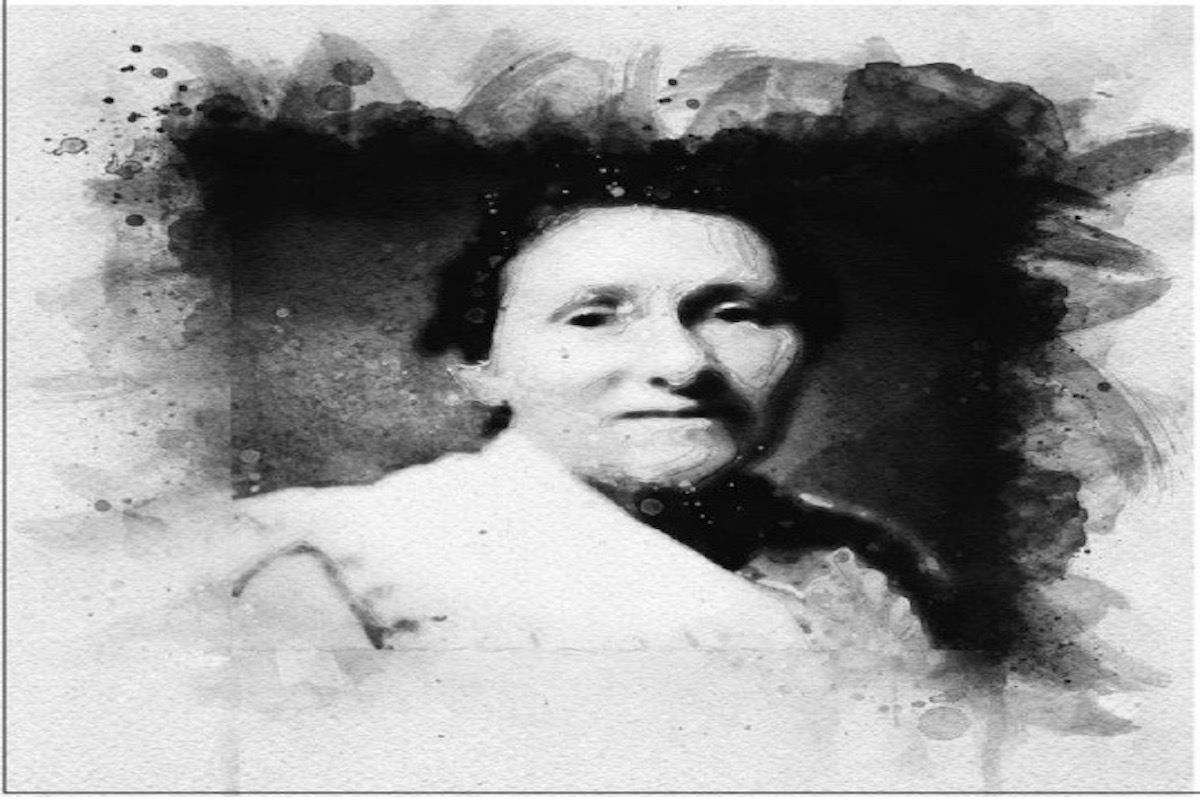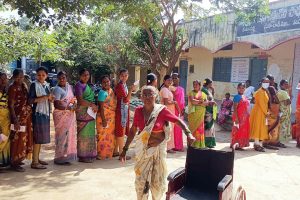It was a bitterly cold day in 1942, but unmindful of adversities a frail woman moved from village to village in Almora. She had been deeply concerned about the atrocities inflicted on family members of arrested freedom members. Even their agricultural fields, the only source of their livelihood, were being auctioned by colonial authorities. This lady was trying to visit as many homes of freedom fighters as possible to arrange some help and express solidarity.
Her visits helped. Depressed family members brightened up on seeing that their respected Sarla Behn had somehow reached their homes in the middle of all the restrictions imposed in the wake of the Quit India movement. They knew about her deep sincerity in trying to help them. After all, had not this British lady left all comforts of her homeland to come all the way to present-day Uttarakhand and helped them in so many ways? She had walked to the remotest hamlets to spread khadi work (livelihoods based on hand spun, hand woven cloth). She had set up an ashram school at Kasauni for the education of daughters of freedom fighters. She was also influential. Local officials could not easily ignore the pleas of the learned British lady. So, there was hope that the visit of their Sarla Behn would help oppressed families.
What they did not realize was that top-level officials were plotting at the same time to arrest Sarla Behn as well. Intelligence officials had reported that Sarla Behn was not only deeply committed to the freedom movement but in addition she had also won the respect and affection of most people. In those sensitive days of the Quit India Movement, officials felt it would be dangerous if Sarla continued to visit villages. So, they first detained her at Kasauni ashram and then arrested her formally.
In prison, she sometimes remembered her early days in Britain where, then known as Catherine Mary Heilman, she was regarded as a brilliant student with a bright career ahead of her. But her yearning for a more purposeful life brought her first to educational work in Rajasthan, and then after meetings with Mahatma Gandhi, to take up work more closely related to the freedom movement in Uttarakhand. Although not prepared for the rigors of jail life, she adjusted to it and when her friends met her at court hearings they were surprised at her calmness and tranquility.
After her release, she again devoted herself to helping freedom fighters and to further preparations for freedom movement. Hence in 1944 she was arrested again. The authorities first sent her to Almora Jail, then shifted her to Lucknow Jail, and then back to Almora again. This as well as other problems faced by Sarla led to a protest by Jawaharlal Nehru against the harassment caused to her.
But Sarla maintained her calm. As a khadi worker she had been spinning thread in jail also. As Raksha Bandhan day approached, she coloured this thread with a little turmeric powder and tied a rakhi on the hand of the jailer. The official was overwhelmed with emotion and could not refuse the request of Sarla Behn to allow her to tie rakhi on the hands of other freedom fighters who were in the same jail. The emotional union of various freedom fighters also revealed the surprising extent to which Sarla Behn had been able to identify herself at a deep emotional level with the Indian people, their traditions and freedom movement.
Pushing aside thoughts of her own problems she worried endlessly about the families of other imprisoned freedom fighters who had a weak economic base. When she came to know that some of them had died in the course of imprisonment, she was very distressed. When she was released, she went back to helping these families.
After independence she continued to work in Kasauni and the training and inspiration she provided led to the emergence of such leading activists as Radha Bhatt and Vimla Bahuguna. Vimla along with her husband Sunderlal Bahuguna later became mentors for an entire generation of Gandhian activists in Garhwal (the Chipko movement, the anti-liquor movement and a host of other constructive activities) but they all always regarded Sarla Behn as their teacher. Sarla Behn also went to the plains to contribute to the Bhoodan movement and the surrender of Chambal dacoits.
Even better known than Sarla Behn is Annie Besant who was already famous before coming to India as a theosophist, socialist, philanthropist and educationist. She believed strongly in home rule for India as well as Ireland. She became very respected in the Indian National Congress and was elected its President in 1917. But she is remembered even more for her collaboration with Lokmanya Tilak in starting the Indian Home Rule League. She served a prison sentence for her activities relating to the freedom movement of India. Till her last days she continued to support the cause of freedom of India.
Freda was a student in Oxford when she met BPL (Baba Pyare Lal) Bedi and they fell in love. Coming to India, Freda got involved in the freedom movement of India and even went happily to jail for this. After independence she emerged as an activist in Kashmir. When the Tibetan refugees came, Nehru motivated her to help them, a task which she took up with great commitment. She finally converted to Tibetan Buddhism and was known as Sister Palmo. Some people recognize her even more as mother of the famous film star Kabir Bedi.
It is important to remember and respect such inspiring examples of women (and men) who overcame artificial divisions and narrow, selfish considerations to respond to the call of their conscience and were even willing to go to jail for the freedom of a country which had been colonised and exploited by their own country. We cannot forget the many extreme injustices of colonial rule, but we should also remember with respect those Britons who took the exceptional decision to work for the freedom of India with deep commitment.
The writer is a journalist and author. His latest book on the freedom movement is titled When the Two Streams Met.










